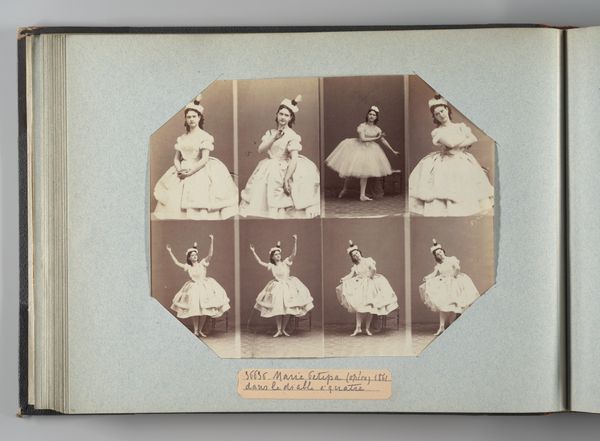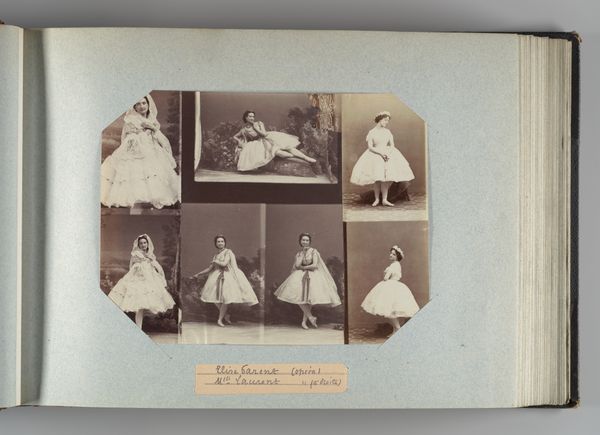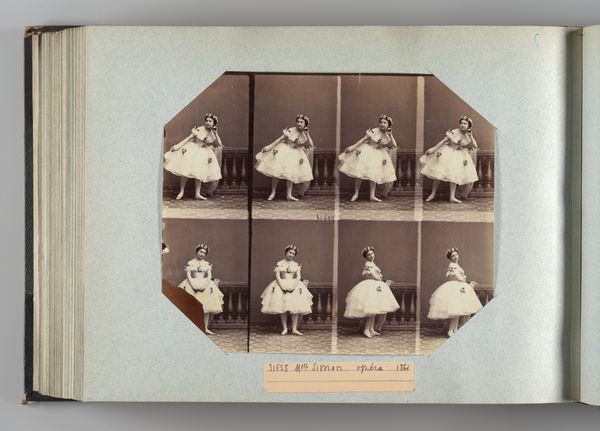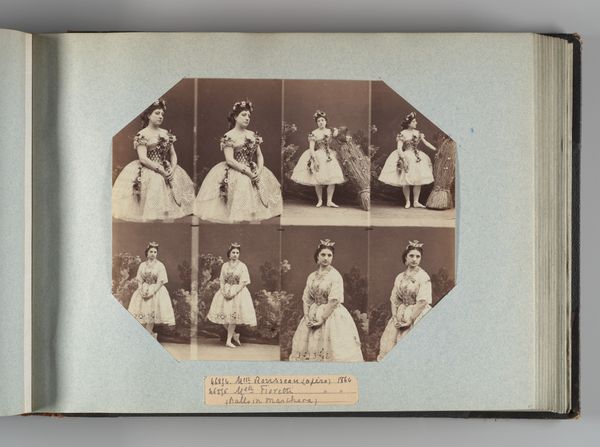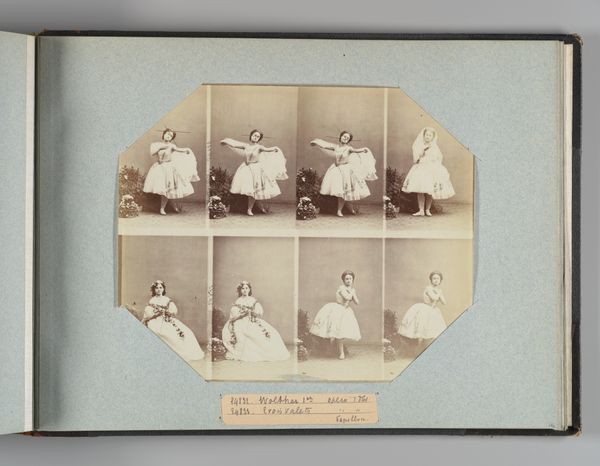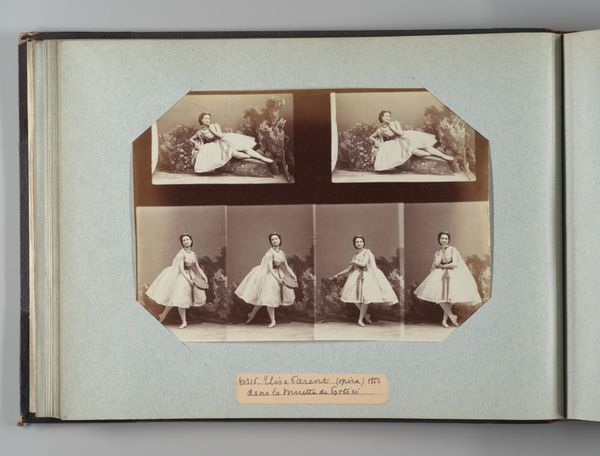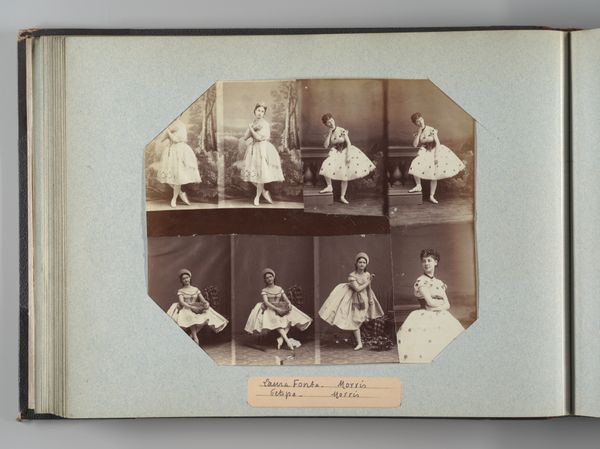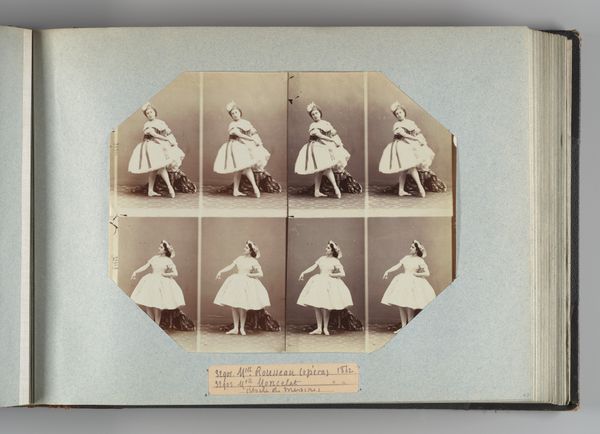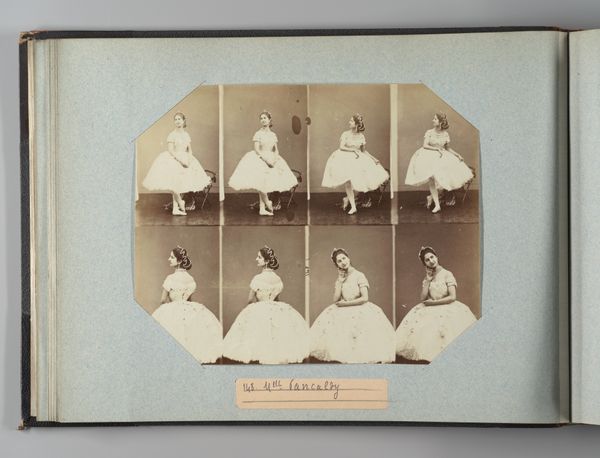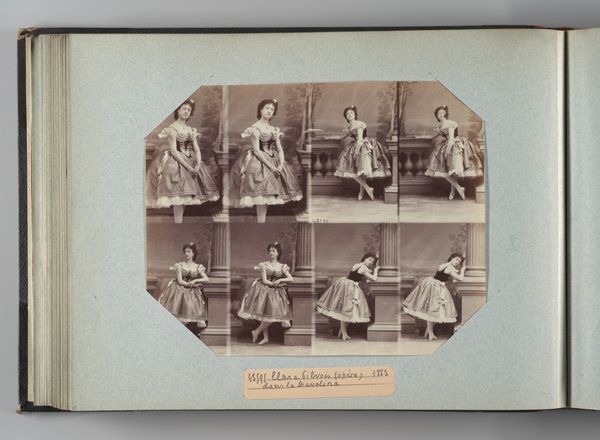
photography, albumen-print
#
portrait
#
photography
#
albumen-print
Dimensions: Image: 7 3/8 × 9 1/4 in. (18.8 × 23.5 cm) Album page: 10 3/8 × 13 3/4 in. (26.3 × 35 cm)
Copyright: Public Domain
Curator: Here we have Andrè-Adolphe-Eugène Disdèri’s “Mlle Rousseau; Aline,” a striking albumen print portrait from 1862 currently held at the Metropolitan Museum. What captures your attention first? Editor: There’s an eerie repetition—almost dreamlike. It’s the eight poses, like frames in early cinema. She is always standing perfectly, looking still and yet suggesting movement. A silent, spectral performance of her presence. Curator: The use of the carte-de-visite format allows us to understand the rise of celebrity culture during the mid-19th century, wouldn't you say? Photography became more accessible, offering the means for broader society to own an image, which fueled a system of exchange for studio portraits of artists. Editor: Absolutely. And it’s interesting, considering her pose. Is it ballet? Perhaps folk dancing in elaborate attire. She becomes an icon replicated eight times, a proto-meme floating through history. One is the real woman, the rest are…reflections. It sparks so many stories. Curator: Consider Disdéri’s commercial innovation through the multiple lens camera that enabled him to print several images on one plate, a pivotal method in the mass production and distribution. Each albumen print meticulously produced involved extensive labor in coating, sensitizing, exposing, and developing. Editor: Yes! Seeing those multiple panels, the craftsmanship involved is remarkable. Each image is not simply captured, it is cultivated, like light farming. But what labor lay hidden—the backstories to those lovely fabrics, dyes? Were these items from a Parisian boutique or a more politically loaded production? The details haunt me. Curator: This form enabled broader patronage outside traditional elite networks. Also, it facilitated image-sharing, embedding these public figures into widespread social practices. Editor: Thinking about this ballet, one is almost tempted to try to construct a fuller narrative of each individual shot and speculate how the whole plays out on the stage, given that so little context is actually provided. It opens up this really interesting world where, for all of her presence, the ballet star on display stays so utterly mute. Curator: Certainly a complex dance involving materials, labor, celebrity, and society at large. Editor: True, from stage lights to photographic chemicals, this era used its innovative potential to give her dance, the star, to a new audience. An innovation with subtle complexities.
Comments
No comments
Be the first to comment and join the conversation on the ultimate creative platform.
